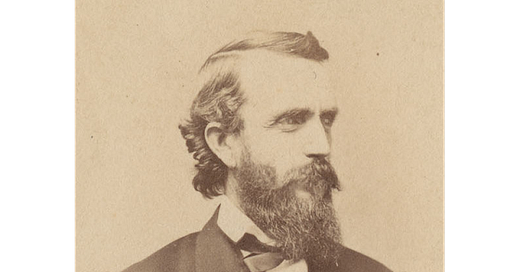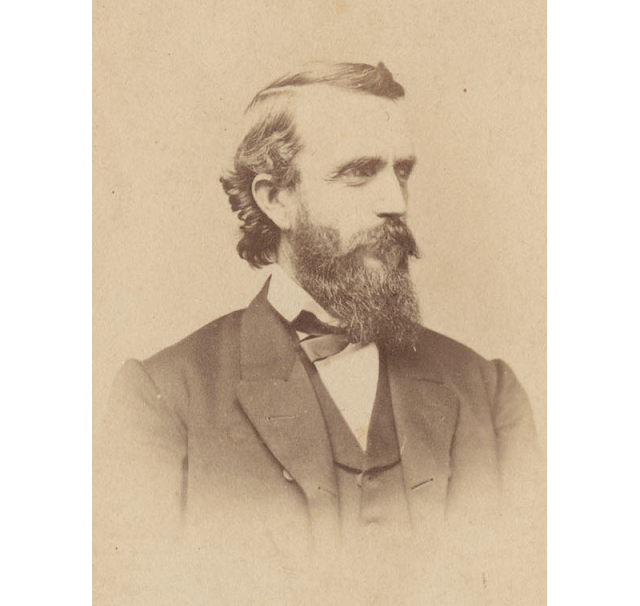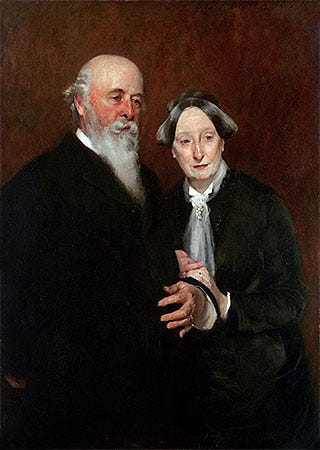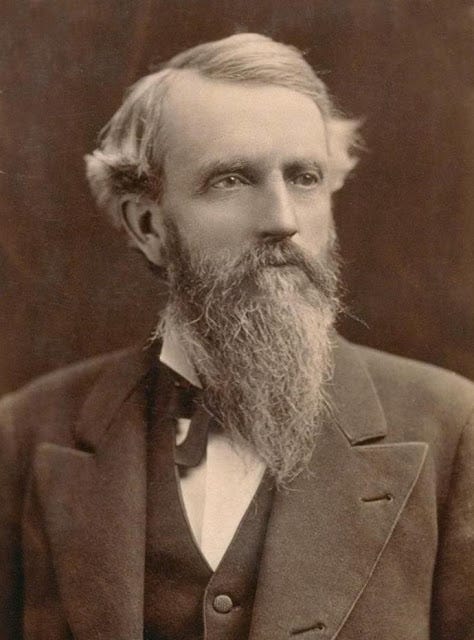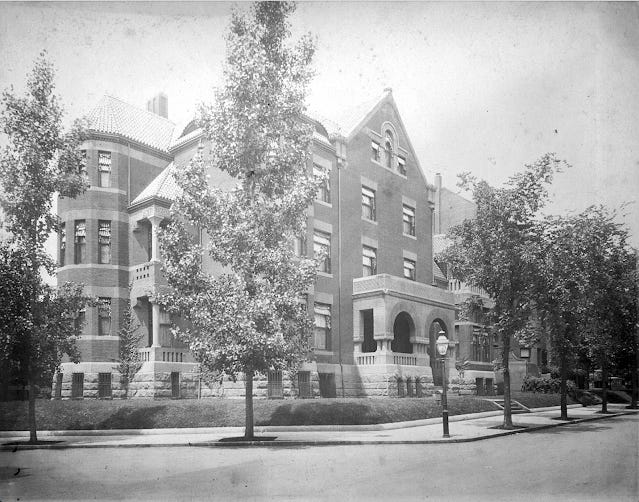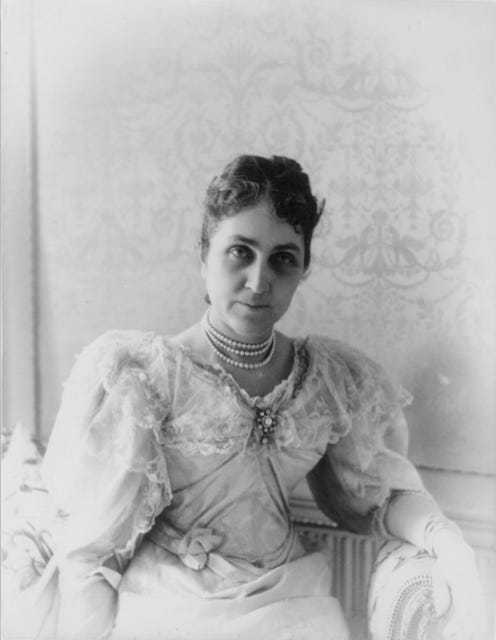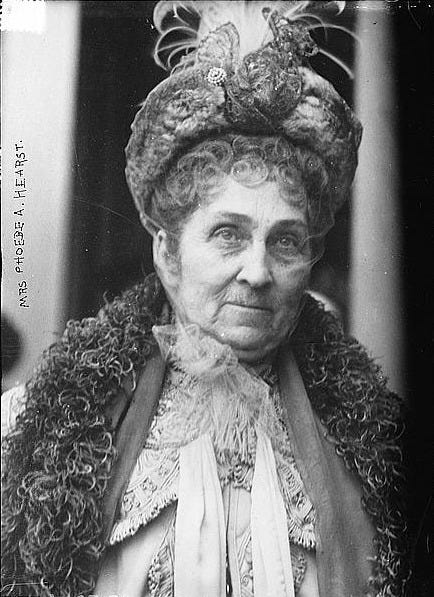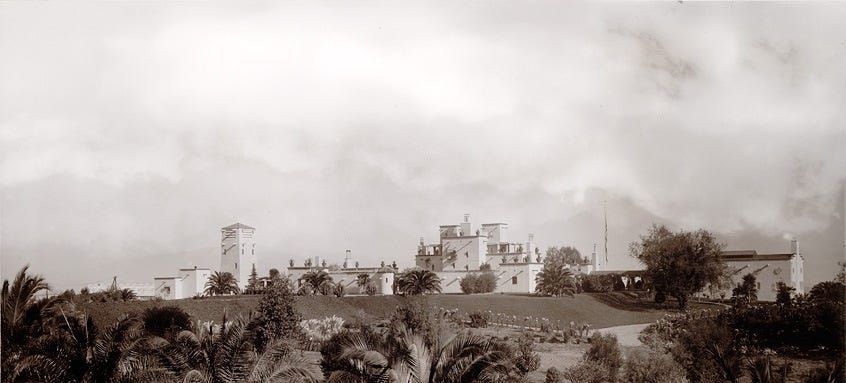In 1886, George Hearst, wealthy American businessman, U.S. Senator, and the father of newspaper tycoon William Randolph Hearst, arrived in Washington to fill a vacant U.S. Senate seat, and a year later was elected to the Senate, where he served until his death in 1891. In 1889, he purchased a house on New Hampshire Avenue, NW that had been built John Field house six years earlier and altered it beyond recognition.
John Field, a successful Philadelphia banker and businessman, and his wife Eliza were well established in Philadelphia before they decided to retire to Washington in the early 1880s. They were great patrons of the arts and noted benefactors of the Pennsylvania Academy of Fine Arts; Mrs. Field’s father was one of its founders. The couple’s portrait was painted by John Singer Sargent in Paris in 1882, and Mrs. Field donated it to the academy after John Field’s death. Artist Gilbert Stuart had painted her mother’s (Abigail Willing) portrait, and Rembrandt Peale had painted her father’s.
After retiring and spending years in Europe, in 1883 the Fields decided to make Washington their home for their final years. They engaged local architect Robert Fleming to design a spacious square house at 1400 New Hampshire Avenue that is believed to have been the first Colonial Revival–style house in Washington.
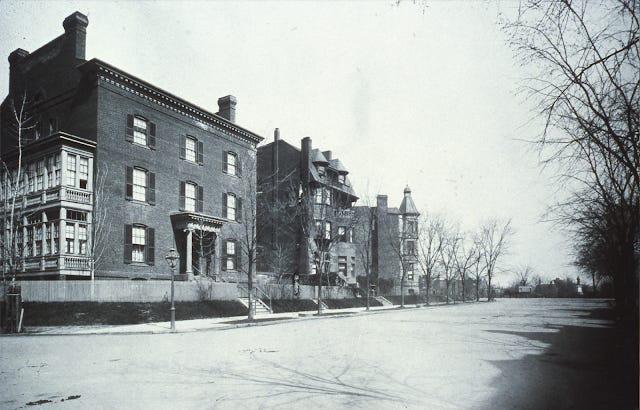
John Field had a special gift for friendship and became friends with many noted authors, poets and artists in England and the United States. He maintained an ongoing correspondence with poet Robert Browning and was an intimate friend of James Russell Lowell, who was once a guest at the Field’s house in Washington.
John Field died in 1887. According his wishes, Eliza was to remain in Washington. But that same year, she sold the house to Charles Fairchild, who had just been appointed as Secretary of the Treasury, and she moved to New York. In 1889, George Hearst purchased the house from Fairchild.
When the Hearsts bought the Field's house, they were not happy with either its size or its architectural style. While Robert Fleming had pioneered the introduction of the Colonial Revival style to Washington with this house, the Hearsts brought a taste for the much heavier and old-fashioned Richardsonian Romanesque Revival style that had been slow making its way west, so was new and popular in California at they time they left.
The original Field house was completely torn apart, inside and out, expanded and refaced. The finished house boasted thirty-two bedrooms and twenty-two baths and was, in the Hearsts’ minds, a home worthy of their wealth and stature.
When she first arrived in Washington and began entertaining, Phoebe Hearst preferred to host intimate gatherings in her home, sponsoring talks by various well-known men rather than the larger, traditional social fêtes. These talks were held in the afternoons, each featuring a unique topic. Initially, these gatherings were considered an undesirable and uncomfortable innovation, but they then became quite the thing for others to host as well, although Mrs. Hearst was recognized as the leader in what became a very fashionable movement.
According to Marguerite Cassini, Phoebe Hearst also set the bar for society musicales; they were simply the "best shows in town." Phoebe's gatherings never consisted of more than fifty guests and featured the biggest opera stars, musicians and theatrical names of the time. Counted among them were Madame Schumann-Heink and violinists Jan Kubelik and Fritz Kreisler. Phoebe was also very devoted to her charities, one of which was a free kindergarten modeled after those she had seen in San Francisco at the time, and also enjoyed helping out neighbors with their charities.
George Hearst died of stomach cancer at his home in Washington in 1891 at the age of 70, having spent less than two years in his newly remodeled house. Like Eliza Field, Phoebe did not remain in Washington long after her husband's death.
Returning to California, Phoebe engaged architect Albert Cicero (A. C.) Schweinfurth to build her a new home there in 1893, the Hacienda del Pozo de Verona, in Pleasanton. The hacienda had substantial later additions designed by architect Julia Morgan, best known for her work on Phoebe's son's Hearst Castle in San Simeon, California. Phoebe died at her hacienda in 1919 of the Spanish flu at age 76.


